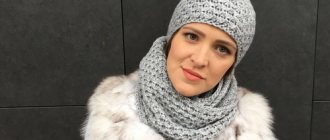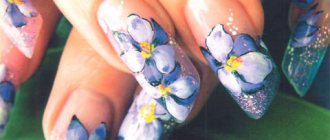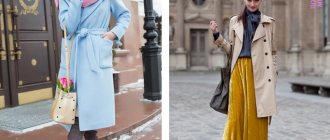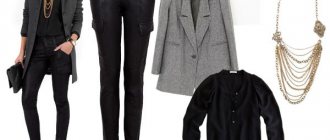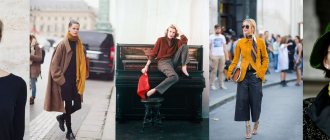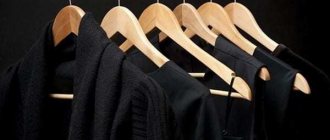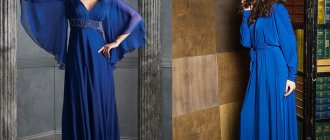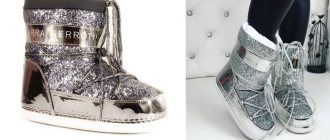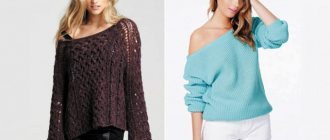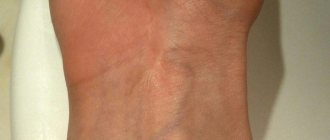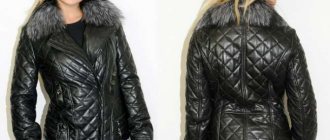Fashion trends of the season
A scarf is a versatile accessory. It can be worn in any weather. It is suitable for men and women, adults and children. If you master the fascinating science of tying interesting knots, a scarf turns into one of the most expressive elements of your image.
The fashion for scarves has never gone away, but recently these accessories have firmly taken their place as everyone's favorites. Settled at the top:
- elongated knitted models;
- scarves and stoles made of wool, cashmere, silk;
- snoods;
- fur boas and capes.
A wide color palette is in fashion: plain accessories, prints, tartan.
Wear a scarf as a hood
In the Middle Ages, representatives of different social classes wore hoods, which were a combination of a scarf and a hood. You can do the same with any long scarf or voluminous scarf.
If your neck is well enough hidden from the cold by a scarf, put the remaining fabric on your head. Stylish, beautiful and goes well with other accessories. For example, sunglasses.
Beautiful knots and exquisite loops
There are countless ways to tie a scarf beautifully. Some are so simple that even a five-year-old child can handle them; others require long training and carefully selected material.
Simple knot
Suitable for winter and summer models. The scarf is hung around the neck. At the level you like, make a regular weak knot on one half (left or right). The second edge is threaded through it, tightened a little tighter and the folds straightened.
Back
Suitable for models of any length, but it is better to take extended ones. The scarf is draped around the neck so that the middle runs along the front of the neck and the ends are behind the back. The ends are folded one on top of the other, and the lower one is folded inward through the loop on the chest. Then the knot is straightened, giving it volume.
Double
The thickness can be any, but the length is at least 1.5 m. The central part is placed on the chest, the ends are wrapped around the neck, bringing them forward. The resulting loop can be made smaller or larger - all options look beautiful. The free edges are tied in front with a knot and straightened.
Twisted
Looks good on long thin scarves. To tie it, the scarf is wrapped around the neck so that the loop is in front. Then wrap the loose ends around this loop three times.
False
Can be made from any models. The scarf is thrown around the neck. The right or left half (optional) is wrapped once around the palm to form a small, tight loop, into which the same strip is threaded first, and then the second one. Carefully tighten the structure and straighten the folds.
French
You will need a long stole or scarf. Fold in half, throw it around the neck, holding the central loop on the chest. Both ends are passed into this loop. You can tighten it “under the throat” or loosely - all options look beautiful.
With ears
For this purpose, you will need a long, wide, thin model of a scarf or stole. The desired length of the “ear” is measured from one edge, held at the shoulder, and the rest is wrapped around the neck twice, placing one turn over the other “tower”. The second free end is brought to the first and passed between the layers. As a result, the free edges resemble long bunny ears.
One turn
The simplest method, well suited for voluminous, warm models. The scarf is wrapped once around the neck, and the ends are not tied, but simply hidden under outer clothing.
In two turns
A comfortable way to wear a thick, warm scarf with a jacket. It is hung around the neck, the ends are tied together and thrown over the shoulder onto the back. A knot is not needed, since the scarf will be held tightly by the jacket placed on top.
Crisscross
Volumetric design suitable for any model. A ring is made on the central part and placed around the neck. One of the free ends is brought out onto the chest, and the second is first slipped under the ring, then crossed over the first end, and passed through the “window” between the first end and the wall of the ring. It turns out that the second end is intertwined crosswise with other loops.
Necklace
The scarf should be long and thin. But thick fabric will also work well.
- Twist into a rope.
- Fold in half.
- Twist it into a rope again.
- Place the top large loop on your chest, wrap the tourniquet around your neck and pass the free end into the large loop.
Double necklace
This necklace can be made from short scarves. It turns out especially impressive if the ends are decorated with fringe.
Wrap the scarf loosely around your neck, tie it in two knots and turn them to one side. One free edge is tucked back, and the other is passed through the loop from the bottom up and straightened.
Wide necklace
A universal method, suitable for any scarves: thick, thin, long and short.
Tying your man's ties?
Make one turn around the neck. The loose ends are passed through the resulting loop from the outside to the inside so that they are completely hidden.
Suspension
Looks beautiful on thin, narrow models, as well as on scarves. The scarf is folded in half, one end is secured with an elastic band (you can use a hidden or decorative one, if desired). The middle part is placed on the chest, the ends are brought behind the neck and brought forward again. Tie the ends with any knot and hide them under the central part of the fabric.
Wide suspension
Suitable for fairly long models made of thin material. Throw a scarf around your neck. Both freely hanging ends are twisted into a bundle, but so that free ends remain. They are then threaded through a large loop, and then threaded again into a loop of rope. Straightening out.
Triple suspension
Great decoration for spring, summer and autumn. The scarf should be long and thin. If the model is decorated with fringe, it turns out even more impressive.
Make a wide ring and throw it around the neck. The hanging end is wrapped around the ring at shoulder level and a knot is tied. They do the same on the other side. Then both ends are connected at the very bottom of the ring and tied into a knot.
Stylish casual
A universal, year-round option for models of any thickness. Length doesn't matter either.
Fold a wide loop and put it around your neck. The free edges are wrapped around the sides of the ring and aligned on the central part of the chest.
Ascot
Suitable for all models. A simple knot is tied around the neck. Both halves of the scarf are straightened and laid evenly in the center of the chest. The top half should completely cover the bottom. Hanging edges are hidden under outerwear.
Double Ascot
Very similar to the previous one, but it will require an extended model. A tight ring is made around the neck, the hanging edges are brought to the chest, they are tied and the upper strip is carefully straightened over the lower one.
Tie
It is better to take an elongated model, but you can also make it from short ones. It is tied according to the same principle as a simple tie knot. The scarf is thrown around the neck, one half is wrapped around the other and threaded through the resulting loop, moving from the outside inwards.
Double loop tie
For this option you need a long and not too thick scarf. They wrap it around the neck once, and then tie it, exactly the same as in the previous point: they put one half behind the other, bend it and push the free edge into the loop.
Bow
For a lush, expressive bow, the model should be thin, wide and long. The material should not be slippery.
The scarf is hung around the neck; two loops are made on one side, “growing” from one point. The other end is wrapped around the place where the loops are connected, and the end is passed into the hole, fixing the bow.
This knot is quite complicated and requires skill.
Wreath
For this decoration you will need a long summer scarf, the thinner the better.
- The central part should be placed on the chest at the level to which the wreath should descend.
- Throw the ends over your back.
- Cross the ends at the back of the neck and bring them forward again.
- Wrap each end around your side of the wreath several times.
The free edges can be brought to the very center of the wreath or left hanging on the sides at the same height. All options look impressive.
Chain
To weave a chain you need a long, narrow, thin model. It is folded in half and hung around the neck so that the loop is high and the ends hang low. Both ends are pulled through the loop. Then the ends are slightly moved to the side, the freed loop is twisted so that it does not unravel, and both ends are passed through the resulting window again. It turns out to be a chain.
weaving loop
Looks great on elongated models of any thickness. In harmony with sports and classic suits. You can tie it on both the right and left sides.
- Fold the scarf in half and hang it around your neck so that the loop is on one side and both ends are on the other.
- Thread one end into the loop.
- Hold the threaded end with your fingers, slightly pull the loop towards the second end, twist it and pass the second end into the hole.
- Tighten and straighten the loops, giving them volume.
Shell
This summer scarf design looks like it has no knots at all.
- Throw a scarf around the neck: one side is made much longer.
- The long side is wrapped around the neck.
- Straighten the loop and hide the rest of the long end in its folds.
Pretzel
The pretzel is very similar to a weaving loop. The beginning is the same: fold it in half and hang it around the neck. Then wrap the loop around the neck once. Then they continue, as in a weaving loop: one end is threaded into the loop, twisted and the other end is threaded twice. The result is an intricate weave.
Tourniquet
The easiest way is to twist a long, thin scarf into a rope, throw the ends behind your back and tie it there with a knot.
Flower
This is a very beautiful, but rather difficult design to execute. To tie a flower, a scarf is hung around the neck, one half is twisted into a thin flagellum and a small loose knot is made on it. The other end is passed into it and carefully tightened. A knot made from a twisted rope is very similar to a lush flower.
Under the belt
This way you can wear a very large, wide scarf or stole. It is simply thrown over the shoulders and belted with a narrow belt. The outfit is comfortable, cozy, but very bold.
Voluminous scarf
How to beautifully tie a large scarf on a coat if it is very voluminous? To begin with, you should take into account that overly voluminous models are best combined with down jackets or leather jackets. Therefore, such a scarf would not be the best choice for a thin coat or raincoat. But for winter outerwear it will be an excellent addition to the look.
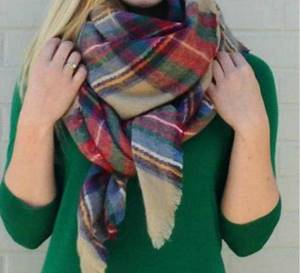
How to tie a large scarf around your neck? This can be done in one of the following ways:
- Throw the ends over your shoulders, leaving the main part in front. Then cross the ends behind your back and bring them forward, then tie them into a knot and hide them under the main part. You can slightly straighten the scarf with your hands, adding even more volume.
- Wrap the scarf several times around your neck and hang the ends down in front. This method is very simple. However, it will be a great option when time is short.
- A more complex option, but one of the most effective, is how to tie a large scarf - throw it around your neck, tie it in a knot under the throat and wrap the ends around it. The result will be something like a tourniquet. You can also hide the ends under the tourniquet itself, or you can leave them out.
How to tie a scarf so that there are no ends
There is a whole group of beautiful ways in which the ends of the scarf are completely hidden in the folds. They look impressive, and mastering their technique is not difficult.
Eight
The main element of the figure eight is the twisting of the knot.
A scarf folded in half is wrapped around the neck and the ends are pulled through the large central loop. One of the edges is again passed into the loop. Then the loop is twisted, leveled and the second edge of the scarf is pulled through the resulting window. The protruding short ends are hidden under the folds of the material.
Madeleine
For this option you will need a wide, long model. It's better to take a stole. It is thrown over the shoulders and carefully draped. Tie the corners of the wide edges with a double knot at the height of the central part of the chest. Shift the nodule to the left or right shoulder. Now the inner edge, which is opposite the knot, is thrown over the shoulder. It turns out to be a beautiful drapery.
Glamor
To make an even, beautiful drapery, a scarf is thrown over the head, the ends are folded crosswise on the chest, brought behind the neck and tied at the back with any knot. Now they lower the part of the scarf that covered the head onto their shoulders and straighten out the folds.
Imitation snood
At its core, a snood is a large knitted ring. In order to make an imitation of it, just fold a regular scarf in half and tie the corners of its edges with knots. After this, you can wrap the resulting ring around your neck several times and lay down the drapery.
Collar
Made from warm stole. One half of the stole is placed on the chest, the other is wrapped around the neck. The strip is turned over and made another turn around the neck. The edges are tucked under the tabs, brought back and tied there with knots. Straightening out.
Narrow collar
A warm stole is folded in half, wrapped around the neck and tucked in the edges.
Butterfly
You will need a wide, long scarf made of dense, non-slip material that holds large folds well.
They hang it around the neck, making one edge noticeably longer than the other. Make one turn around the neck with the long end, the ends should become approximately the same length.
The ends are crossed: the one that was on the left side is brought to the right, and the right one to the left. The end that was wrapped around the neck is passed through the loop to secure it.
Now straighten the ends to their full width, take their corners, bring them behind the back and tie a small knot. Place symmetrically on the chest.
Hidden loop
A long scarf of medium thickness is wrapped around the neck in several layers. The ends are tucked in so that they are not visible.
Triangle
Made from a large, not too thick square stole. It is folded diagonally to form a triangle. They hang it around the neck like a scarf. The ends are crossed, brought back and tied at the back of the neck with a knot. Tuck the remaining ends under the folds.
Wear a scarf like a frill
Jabot is an elegant snow-white “collar” that was used in the 17th century by court aristocrats and wealthy people. It was believed that it gives the face freshness and “status”.
You may not be able to achieve this effect with a regular scarf, but you can make a beautiful accent on it. Let the scarf not be a simple annoying accessory that dangles chaotically around your neck. Let it become the key accent of your entire image. To do this, just wrap it around your neck according to the principle of an old frill.
See example below.
Your scarf can also brighten up your complexion and highlight the natural beauty of your eyes. You need to choose the shade that suits you best.
How to tie different types of scarves
Each type has its own most convenient tying methods. But there are no hard and fast rules. Having mastered a few basic techniques, you can fantasize and invent your own unusual knots.
Shawl
A long, wide scarf made of fine fabric can be worn as a shawl. At the same time, you don’t have to tie it, but simply throw it over yourself. Or you can throw it on like a scarf and tie the ends with any knot that looks beautiful on fabric of this thickness and color. Then turn the scarf so that the knot is on your shoulder.
Bactus
Bactus is a traditional Scandinavian knitted scarf. The length can reach up to one and a half meters. It is worn by women and men with both winter and summer clothes. Suitable for all styles.
The classic method: the triangle is placed in front or behind, the ends are tied. Or you can wear it as a shawl without making a knot.
Neckpiece
A boa is a scarf made of fur or the whole skin of a fur-bearing animal. It is worn with elegant and evening dresses, sweaters, jackets and even jeans. But it is not customary to wear boas with fur coats and coats with fur trim.
As a rule, the boa model uniquely determines the way it is tied.
Arafat or Palestinian headscarf
The arafatka (keffiyeh) is a traditional headscarf worn by men in some Arab countries. Each nation has its own way of tying this accessory. It can simply be thrown over the head and secured with a special hoop, it can be twisted like a turban, or the ends can cover the lower part of the face.
In European fashion, the arafat is tied like a regular scarf.
Stole
A stole is more like a wide cape than a scarf. Models made of thick fabrics, cashmere or fur are worn with outerwear, and silk or lace ones are worn with ballroom and evening dresses. There are no strict rules for wearing a stole. Today, even men can include it in their suit.
Stoles are usually thrown over the shoulders and tied in any voluminous knot. It is convenient to fix them with brooches. In addition, the length of these models allows you not to tie them, but just make a few turns around the neck and release the free edges in front or behind.
Snood (clamp, pipe)
A snood, that is, a scarf-ring, is convenient because it can be worn without tying it at all. It holds quite tightly and looks decorative if you simply hang it around your neck.
If you fold the ring into a figure eight and put this design around your neck, the snood will turn into the main element of the suit and an excellent insulator.
Volumetric models can be placed on the neck in rings, like a multi-tiered necklace. One of the rings can be thrown over the head, like a hood.
Long scarf
Long styles allow for countless tying options. In addition, they can be worn without tying them at all. It is enough to wrap such a scarf around your neck several times, and a stylish look is ready.
The convenience of such a detail is beyond doubt. But you need to remember that a long scarf becomes the brightest accent in the image, so you need to select it carefully.
How to wear a scarf with a down jacket
Models made from fine wool and scarves with large knits go well with a down jacket. A bright color will add zest and accentuate your look. A tone chosen close to the color of the outerwear will make the appearance neat and interesting.
Snoods will complement a short and fitted down jacket of medium length. Fringe and ornamentation in the design of the stole will be an elegant highlight. Geometry wins against the background of plain jackets in calm shades. The bright color of the down jacket will be complemented by a scarf in contrasting shades. An openwork wool shawl will add femininity to the look with a short down jacket in a sporty style.
Selection of size and material
Those scarves that match the color type of appearance look best.
Before purchasing this accessory, it is recommended to carefully look at yourself in the mirror.
If the color of the material contains colors that match the color of the eyes or hair, this is a win-win option that can make the appearance much brighter.
To get the most out of your scarf, you need to include models of different lengths in your collection. The size of 170 cm is considered universal; it allows you to tie almost any knots.
The best combinations with clothes
The scarf can be worn with absolutely any clothing: demi-season, summer or winter. You just need to choose a model of the appropriate size and color.
With a coat
For a set with a coat, two options are possible:
- in tone;
- contrasting.
If you choose the first option, then it is better to take the color of the scarf the same color as the coat, but several tones lighter or darker.
Beige and dark scarves look elegant on a brown coat. For red, burgundy and dark cherry are suitable.
A gray scarf is considered universal. It matches outerwear of any color. Checked (tartan) models have almost the same property.
If the coat is decorated with fur, then the scarf should be simple: either knitted wool or fabric, but not fur. While exceptions to this rule are still possible, they require a good balancing of things. But knitted scarves do not go with a leather coat.
Bright silk models look great with light demi-season coats.
The most common knots for sets with coats: regular; French, snood, shawl, butterfly.
The greatest scope for imagination with knots is provided by coats with a V-neck. If the model has a large hood, then the scarf is passed under it.
With a fur coat
For fur coats, the most suitable scarf models are:
- natural: silk, cashmere, high-quality wool;
- light texture: thin material, openwork knitting.
Usually a scarf is worn under a fur coat. It is comfortable and protects the fur from abrasion. If a scarf is regularly tied on top, the fur in areas of friction can deteriorate very quickly.
For tying, choose those options that fit tightly to the neck and do not allow the collar of the fur coat to come into contact with the skin.
The following knots are well suited for fur coats:
- simple single;
- rotation around the neck without knots;
- a triangle made of a light scarf or headscarf;
- snoods made of thin fabrics, twisted in several turns.
Bulk snoods are uncomfortable to wear with a collar. They are more suitable for lightweight models without a collar.
The choice of scarf color is very important for expensive fur coats. The classic options are:
- for black fur: red, beige, blue;
- for brown and white: beige, ocher, mustard;
- for gray: any contrasting colors (red, blue, black, etc.).
Calm gray color suits all options.
With a jacket
Scarves can be worn with any jacket: leather, denim, windbreakers, insulated jackets, anoraks, etc. Simple models are recommended for extravagant jackets, and, conversely, more spectacular ones for laconic ones.
Plain jackets can be complemented with scarves with any prints, but for colored ones you have to select accessories more carefully.
It is better that the color of the scarf does not merge with the jacket, but differs by several tones.
- Bright, contrasting scarves go well with leather models.
- For bomber jackets, plain ones are best.
- It's good to wear light options with denim.
Any knots for jackets are suitable.
With a down jacket
The entire arsenal of winter scarves is suitable for down jackets.
In cold weather, you can warm your neck by wrapping it in a scarf, but do not tie a knot, but simply leave the ends hanging freely.
If the weather is warm and the down jacket can be worn wide open, then you can tie a bow from a thin scarf or wear a light snood with several turns.
For bulky down jackets, it is better to choose warm but thin scarves, otherwise you will end up with the image of a snowman.
With a dress
For scarves worn with dresses, any knots are suitable. For summer, choose models made of silk, chiffon, viscose, cotton, crepe-satin. For cold weather - wool, cashmere, fur.
There are few classical rules for decorating a dress with a scarf:
- bright models are recommended for plain dresses;
- business suits are complemented with small, light, flowing scarves;
- for evening dresses you can use velvet or shiny accessories;
- lace models are best combined with dresses that have lace inserts or are made in a vintage style.
Fashionable scarves fall-winter 2020/21
In a cage
Checks in one variation or another are present in designer collections every season. And the coming autumn and winter are no exception. If you want a fashionable, versatile scarf, then pay attention to models in tartan, glencheck, and also options in large tartan.
Color block
There are two options here: either a plain scarf in a rich color, which will be an important component of a color-blocked look, or models with contrasting color blocks. We suggest choosing the second option. Pink and blue, red and mustard, lilac and blue will combine beautifully. This accessory will look harmonious both over a jacket and with any other outerwear.
Patchwork
Patchwork is a patchwork sewing technique. This season, designers again decided to turn to this type of needlework. Patchwork is also reflected in accessories. For the winter, choose colorful scarves made from pieces of fabric of different colors and textures.
With fringe
Now more than ever, scarves with fringed ends are relevant. Moreover, the longer it is, the better.
With graphic prints
This trend will appeal to those who don't like boring things, especially in winter. Choose bright models with graphic designs - they will become an accent part of your image and can transform even the most ordinary-looking down jacket or raincoat.
By color type of appearance
The most spectacular sets are obtained if the color of the scarf matches the color type of appearance.
- For spring - rich, bright colors; silver, but without lurex.
- For summer - burgundy, raspberry, muted yellow, denim, purple, emerald.
- For autumn - all shades of green, turquoise, orange, copper, mustard.
- For winter - black, ruby red, dark green, dark blue, purple.
When choosing a scarf, you can use the following trick. The hair is tied with a white scarf, the shoulders are bare or covered with something white. They bring the scarf to their face. If the eyes, lips and entire appearance seem brighter, then the scarf fits the color type perfectly.
